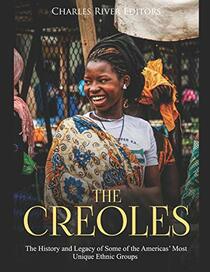The author reminds readers that cultural fusion is not a recent event. The Romans, who controlled most of Europe and the lands around the Mediterranean Sea, were occasionally led by rulers of mixed heritage. Later, when they discovered Alaska, the Russians intermarried with the natives. So, genetic mixing has been going on since the beginning of time.
The Transatlantic Slave Trade evolved in an unusual way; Africa's west coast rulers were too strong for the Portuguese (and other traders) to fight with, so they formed alliances with African kings, leaders, and other individuals who would sell enslaved people.
After discussing the mixing of various ethnic groups in the Americas, the author zeros in on the Louisianna Creoles and their lengthy and bloody history, different countries ruled new Orleans (France, Spain, US government). Each had a different view of the cultural mixtures in their midst. Under the French, the Creoles had many rights and privileges. However, they continued to erode with the Spaniards and the US government. To fight against their losses, the Creoles intermarried within their group to maintain their rights and lands.
The author points to separate Cajun and Creole cultures -- as cousin cultures, at best. Cajuns adhered to the mores of their French Acadian forebearers. By the 20th century, Cajuns referred to all white, French-speaking natives and immigrants.
Creole culture exists beyond the Americas; in Asia, it also became established in the Philippines when Spaniards intermarried with Filipinos to prevent revolts. Over time, it became advantageous to have mixed (Creole) to avoid high tax brackets. Those of Spanish origin or Creole paid the lowest taxes.
The last chapter discusses the mixture of Roman Catholicism and native beliefs. The author clarifies the difference between Voudou (often written as Voo-doo) and Santeria. The slaves, when introduced to Christianity, only received rudimentary explanations. The locals attached their own native beliefs to their new faith. Voudou believers serve the spirits of their forefathers and recently deceased through vigorous prayer and rituals. Santeria adherents do not believe in spells, charms, or occult magic. Elders practice the art of divination instead.
This book is very interesting in explaining how Creoles came into being and how they created new beliefs to form their own culture. Well worth a reader's time.
The Transatlantic Slave Trade evolved in an unusual way; Africa's west coast rulers were too strong for the Portuguese (and other traders) to fight with, so they formed alliances with African kings, leaders, and other individuals who would sell enslaved people.
After discussing the mixing of various ethnic groups in the Americas, the author zeros in on the Louisianna Creoles and their lengthy and bloody history, different countries ruled new Orleans (France, Spain, US government). Each had a different view of the cultural mixtures in their midst. Under the French, the Creoles had many rights and privileges. However, they continued to erode with the Spaniards and the US government. To fight against their losses, the Creoles intermarried within their group to maintain their rights and lands.
The author points to separate Cajun and Creole cultures -- as cousin cultures, at best. Cajuns adhered to the mores of their French Acadian forebearers. By the 20th century, Cajuns referred to all white, French-speaking natives and immigrants.
Creole culture exists beyond the Americas; in Asia, it also became established in the Philippines when Spaniards intermarried with Filipinos to prevent revolts. Over time, it became advantageous to have mixed (Creole) to avoid high tax brackets. Those of Spanish origin or Creole paid the lowest taxes.
The last chapter discusses the mixture of Roman Catholicism and native beliefs. The author clarifies the difference between Voudou (often written as Voo-doo) and Santeria. The slaves, when introduced to Christianity, only received rudimentary explanations. The locals attached their own native beliefs to their new faith. Voudou believers serve the spirits of their forefathers and recently deceased through vigorous prayer and rituals. Santeria adherents do not believe in spells, charms, or occult magic. Elders practice the art of divination instead.
This book is very interesting in explaining how Creoles came into being and how they created new beliefs to form their own culture. Well worth a reader's time.




